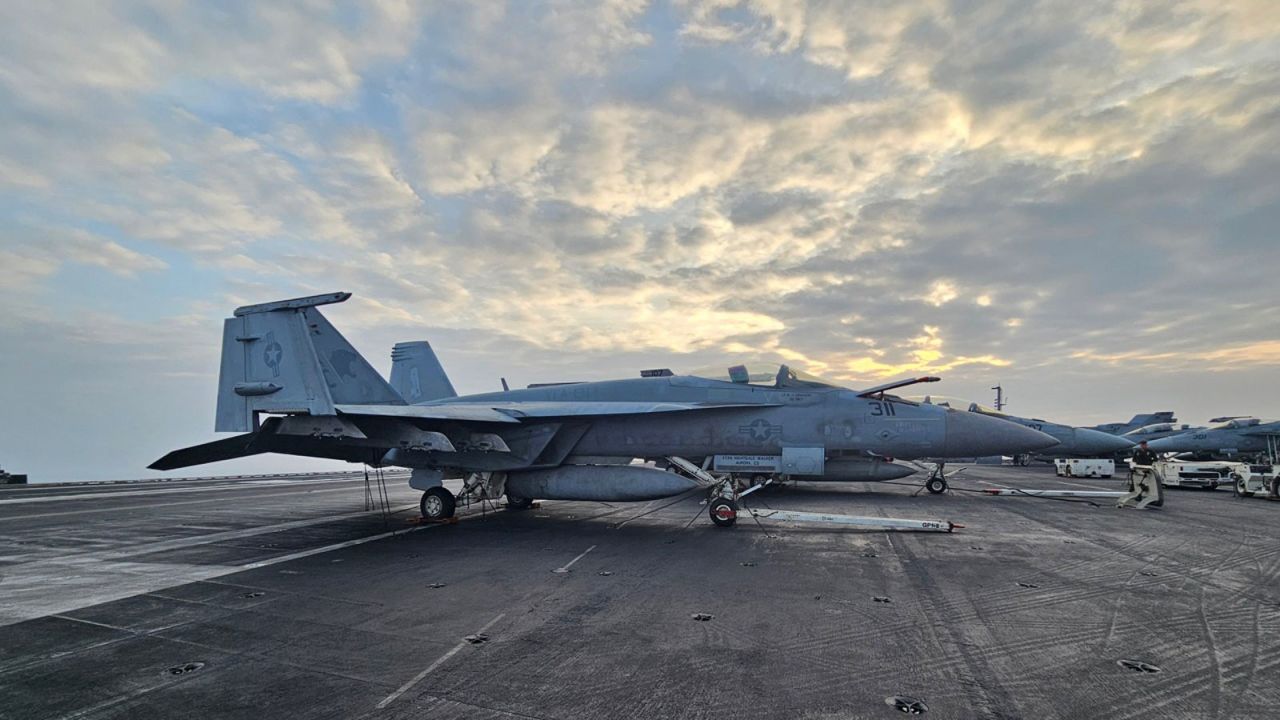“The Threat from Houthi Fighters: Inside the USS Dwight D. Eisenhower”
Alarms blared on the aircraft carrier USS Dwight D. Eisenhower in the Red Sea at 4 a.m. Tuesday, warning personnel to prepare for possible flight operations against a Houthi drone hovering over nearby ships.
The episode turned out to be a false alarm. Yet, it illustrated the constant vigilance of the carrier’s crew, who are alert for potential threats from Iran-backed Yemeni fighters. These fighters have been launching missiles and drones at commercial ships, U.S. and coalition forces along the critical waterway.
CNN gained rare access aboard the USS Dwight D. Eisenhower and the US destroyer USS Gravely, two ships leading the US response to the Houthi attacks. Sailors and pilots recounted how the Houthi threat remains unpredictable and unprecedented.
The crew is working at a frantic pace, deploying jets and firing missiles to try to dismantle Houthi weapons and infrastructure. But after dozens of strikes over the past month, the US military is still uncertain about the status of Houthi capabilities and how long it will take to deter them definitively.
Rear Adm. Marc Miguez, commander of Carrier Strike Group Two, acknowledged the complexity of the situation, stating that the US was not paying much attention to the Houthis before they began launching missiles regularly. As a result, the US does not have a full understanding of the Houthis’ arsenal, particularly underground storage.
The Houthi attacks also mark the first time anti-ship ballistic missiles have been used in combat. Sailors and personnel aboard warships are learning in real-time how to respond to these new tactics.
Capt. James Huddleston, the deputy commander of Carrier Air Wing 3, expressed the risks involved in responding to threats for the first time in a region. Despite the challenges, dozens of fighter jets take off every day from the aircraft carrier Ike to be ready for any potential attack.
While the Houthis have been using drones and anti-ship missiles, the US Navy has been adapting its combat strategies to counter these threats. The USS Gravely has been on the frontline, responding to Houthi missiles and drones with a variety of defense mechanisms, including long-range Tomahawk missiles and anti-aircraft missiles.
The relentless Houthi attacks have kept the aircraft carrier Ike and nearby destroyers from docking at any port for months, an unusual situation. Sailors on board described the environment as stressful but also emphasized their preparedness for any situation.
“This is what we have been training for constantly, day in and day out for years, and we are prepared for whatever comes up. We will do what has to be done,” said FC1 Michael Zito, who helps man the Gravely’s onboard weapons systems.
The Houthi attacks continue as the tensions between the US, Iran, and Yemen persist. As the crews of the USS Dwight D. Eisenhower and the USS Gravely maintain their readiness and adapt to new threats, the situation in the Red Sea remains tense and unpredictable.
